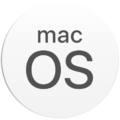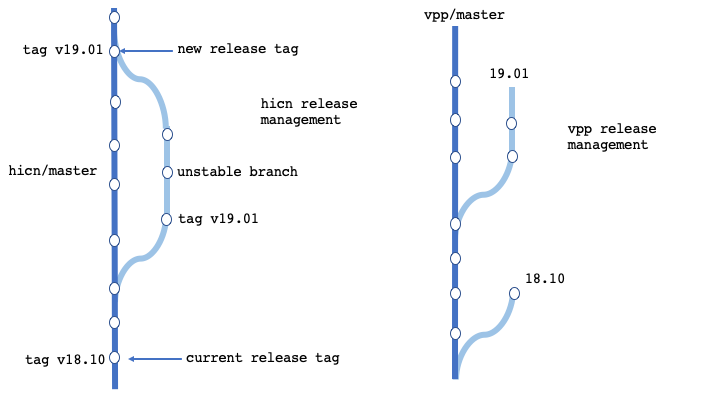Difference between revisions of "HICN"
Muscariello (Talk | contribs) (→More Resources) |
Muscariello (Talk | contribs) (→More Resources) |
||
| Line 100: | Line 100: | ||
! style="width: 140px;" | Docker Hub | ! style="width: 140px;" | Docker Hub | ||
! style="width: 140px;" | Slack Channel | ! style="width: 140px;" | Slack Channel | ||
| + | ! style="width: 140px;" | GitHub extras | ||
|- | |- | ||
|- style="text-align: center;" | |- style="text-align: center;" | ||
| Line 108: | Line 109: | ||
| style="border: 1px solid #777777;"| | | style="border: 1px solid #777777;"| | ||
[[File:Screen Shot 2019-09-26 at 17.38.39.png|120px|link=https://fdio-hicn.slack.com/]] | [[File:Screen Shot 2019-09-26 at 17.38.39.png|120px|link=https://fdio-hicn.slack.com/]] | ||
| + | |- style="text-align: center;" | ||
| + | [[File:github.png|120px|link=https://github.com/icn-team/]] | ||
|- style="text-align: center;" | |- style="text-align: center;" | ||
|} | |} | ||
Revision as of 15:52, 26 September 2019
| hICN Facts |
|
Project Lead: Luca Muscariello
Repository: git clone https://gerrit.fd.io/r/hicn |
Contents
Introduction
Hybrid ICN is an architecture that brings ICN into IPv6 as described in [1]. By doing that, hicn allows to generalize IPv6 networking by using location-independent name-based networking. This is made either at the network layer and at the transport layer by also providing name-based sockets to applications.
hicn allows to reuse existing IPv6 protocol and architectures, to extend them and deploy hybrid solutions based on the use case and application needs. Moreover, hicn can exploit hardware and software implementations heavily based on IP, making much simpler insertion of the technology in current networks, current applications and design future applications reusing what the industry already provides in terms of on the shelf components.
hicn is composed of network and transport stack for a variety of platforms. It supports end-host operating systems by using a portable and lightweight forwarder in C11 and a server oriented network forwarder based on VPP. The transport stack is implemented as a shared library written in C++11 where different transport protocols can be implemented based on the application needs. The early release will support a reliable transport protocol that is throughput optimal (à la TCP) and a transport protocol that can carry audio/video for real-time communications. The transport library provides an API for application that is based on INET socket API with in addition a post-socket API based on [5],[6],[7]. Both network forwarders will be equipped of binary APIs to provide a CLI as well data-model driven management features.
The project will have strong interactions with other fdio projects such as VPP, CICN in the first place and with DMM in the future.
Several applications will be supported from early releases such as HTTP, RTP where many-to-many communications, mobility and multi-homing is important. Some relevant applications include, but are not limited to, MPEG-DASH, WebRTC, heterogenous access (LTE/WiFi), mobile edge offloading (V2X, IoT), mobility management ([2],[3],[4])and cloud-native applications (service-mesh, micro-services communications).
In more detail, early releases would include:
- 1. A core library that reflects the Internet draft specifications in [1];
- 2. A forwarder implemented as a VPP plugin (server);
- 3. A portable lightweight forwarder (client);
- 4. A transport library compatible with both client and server forwarders implementing transport protocols.
Supported Platform
| Linux | Android | macOS | Windows |
|---|---|---|---|
hICN code repository structure
| Folder | Description | Documentation |
|---|---|---|
| lib (C11) | Core support library | core lib |
| hicn-plugin (POSIX C) | VPP plugin. You need to know about VPP | VPP plugin |
| hicn-light (C11) | Lightweight packet forwarder. It is a portable forwarder for most used client devices such as macOS, Windows, Android, iOS, Linux. | hicn light |
| libtransport (C++11) | Library that contains transport protocol implementations as well as a socket API. | Transport |
| utils | Tools for testing | |
| apps | Application examples using hicn stack |
The git repo is also synced to github at
More Resources
| IETF work | Docker Hub | Slack Channel | GitHub extras |
|---|---|---|---|
Getting Started
For developers
News
Internet Drafts
Sources https://gitlab.com/icn-team/internet-drafts
Presentation of hICN at IETF IntArea WG Slides and Video
Meetings
A Slack space is available to discuss about hICN development.
Meetings can also be launched by using Zoom integrated to the Slack space.
hICN vRouter and vSwitch
Work in progress:
- hicn vRouter: FRR, Sysrepo, Netopeer server, hICN vSwitch in the same Docker.
- hicn vSwitch in a docker container.
https://hub.docker.com/r/icnteam/vrouter https://hub.docker.com/r/icnteam/hicn_vswitch
docker pull icnteam/hicn_vswitch
Provides a docker image with hicn VPP plugin and NETCONF/YANG hicn API.
The YANG model can be retrieved from
https://github.com/FDio/hicn/blob/master/utils/sysrepo-plugins/yang/hicn/hicn.yang
docker pull icnteam/vhost
Tutorials
Current Release
Current release is 19.08 and is available on Package Cloud
Releases management
hICN releases are distributed every quarter (End of Jan, Apr, Jul, Oct) based on calendar versioning , i.e. YY.MM. The master branch is always tagged with the latest release which is the latest VPP stable release. As soon as a new VPP release is distributed the hICN master branch will merge code from development branches and keep it in sync with the newly released VPP distribution. The server stack of hICN project, based on VPP, is guaranteed to work with the latest stable VPP release only.
The client stack is unaffected by VPP release management.
Bibliography
- [0] Giovanna Carofiglio (Cisco Systems), Luca Muscariello (Cisco Systems), Jordan Augé (Cisco Systems), Michele Papalini (Cisco Systems), Mauro Sardara (Cisco Systems), Alberto Compagno (Cisco Systems) [1]
- [1] Muscariello, L., Carofiglio, G., Auge, J., and M. Papalini, "Hybrid Information-Centric Networking", draft-muscariello-intarea-hicn-01 (work in progress), December 2018.
- [2] Auge, J., Carofiglio, G., Muscariello, L., and M. Papalini, "Anchorless mobility through hICN" draft-auge-dmm-hicn-mobility-01 (work in progress), December 2018.
- [3] Auge, J., Carofiglio, G., Muscariello, L., and M. Papalini, "Anchorless mobility management through hICN (hICN-AMM): Deployment options" draft-auge-hicn-mobility-deployment-options-01 (work in progress), December 2018.
- [4] Bogineni K., Akhavain A., Herbert T., Farinacci T., et al. "Optimized Mobile User Plane Solutions for 5G" draft-bogineni-dmm-optimized-mobile-user-plane-01 (work in progress), December 2018.
- [5] Pauly, T., Trammell, B., Brunstrom, A., Fairhurst, G., Perkins, C., Tiesel, P., and C. Wood, "An Architecture for Transport Services", draft-ietf-taps-arch-02 (work in progress), October 2018.
- [6] Brunstrom, A., Pauly, T., Enghardt, T., Grinnemo, K., Jones, T., Tiesel, P., Perkins, C., and M. Welzl, "Implementing Interfaces to Transport Services", draft- ietf-taps-impl-02 (work in progress), October 2018.
- [7] Trammell, B., Welzl, M., Enghardt, T., Fairhurst, G., Kuehlewind, M., Perkins, C., Tiesel, P., and C. Wood, "An Abstract Application Layer Interface to Transport Services", draft-ietf-taps-interface-02 (work in progress), October 2018.








